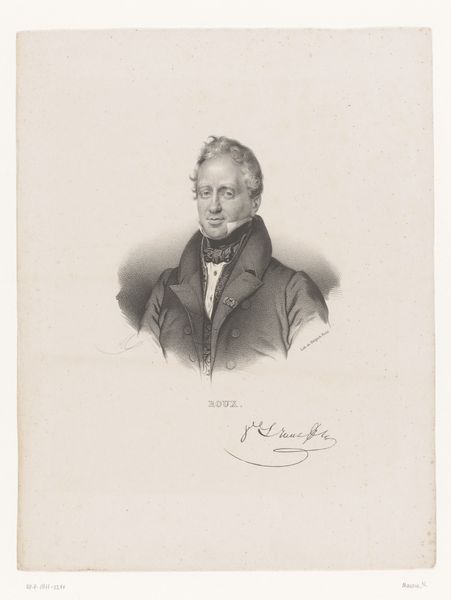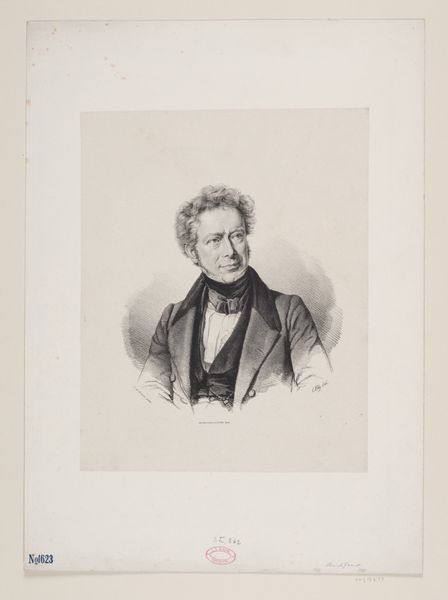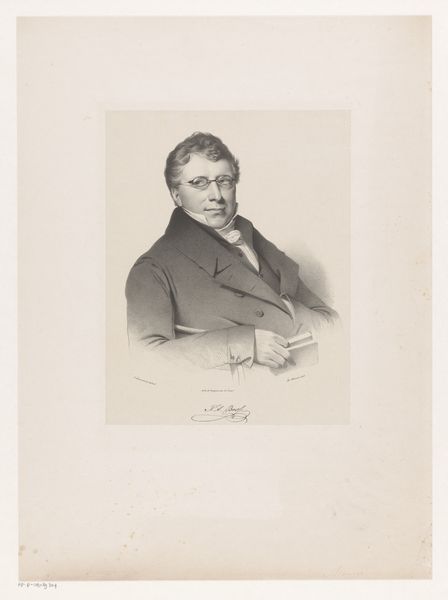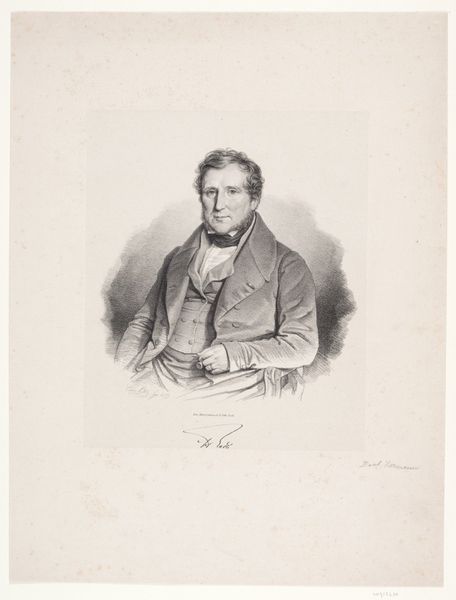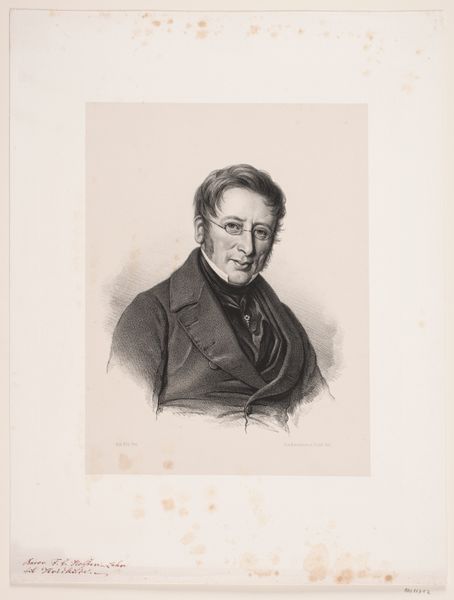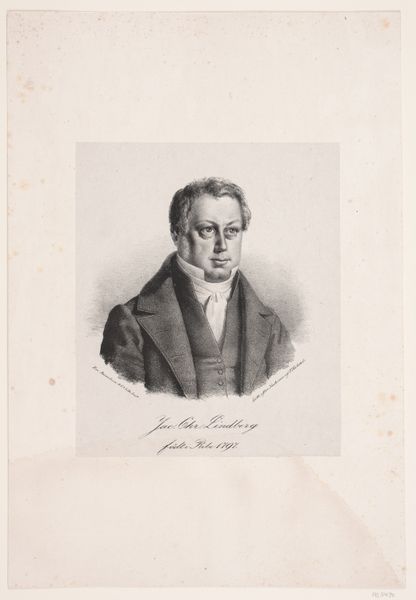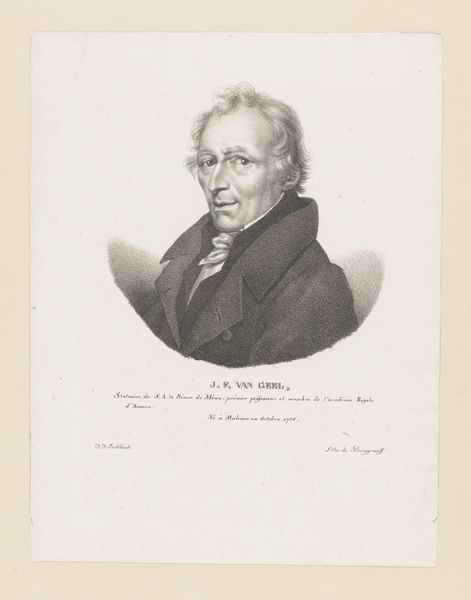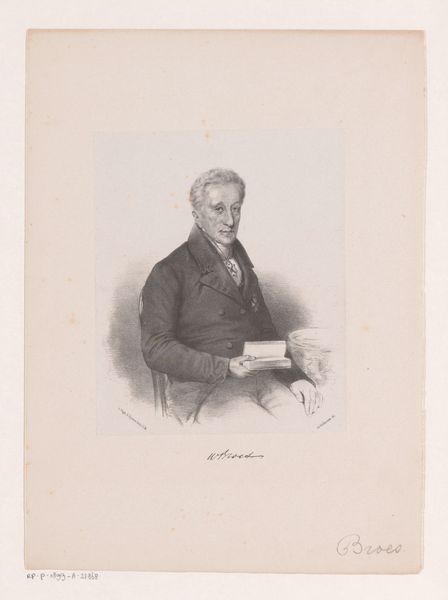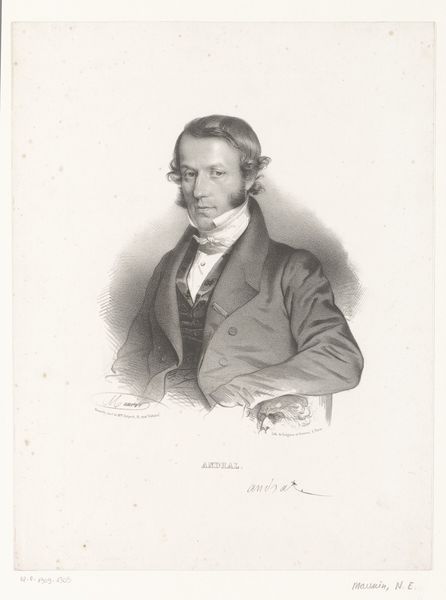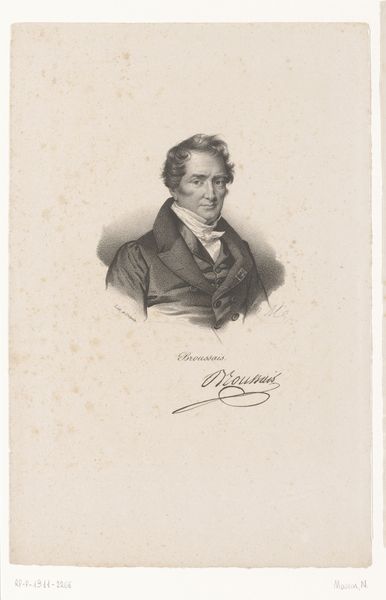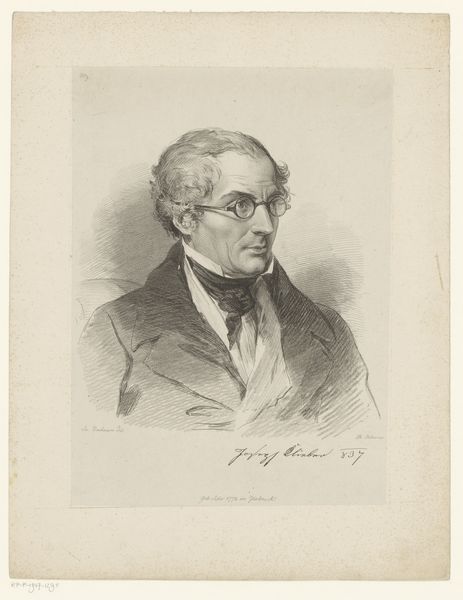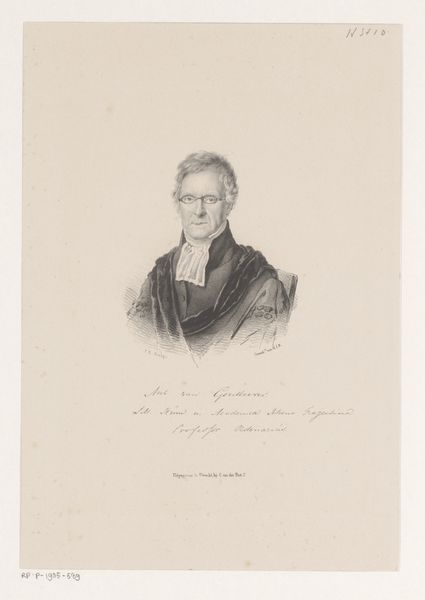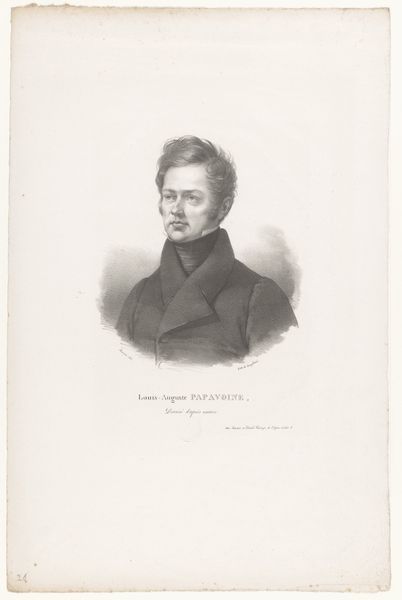
#
pencil drawn
#
photo of handprinted image
#
aged paper
#
light pencil work
#
pale palette
#
photo restoration
#
pencil sketch
#
light coloured
#
personal sketchbook
#
watercolour illustration
Dimensions: height 474 mm, width 330 mm
Copyright: Rijks Museum: Open Domain
Curator: This is Pierre Roch Vigneron’s “Portret van Jacques-Antoine Manuel,” created in 1823. It seems to be a print, possibly from a drawing or etching. Editor: My first impression is one of stoicism. The subject has a very serious, almost severe look, softened only slightly by the light shading around his eyes. Curator: Jacques-Antoine Manuel was a prominent figure in post-Revolutionary France, a lawyer and politician known for his liberal views. He was a defender of individual liberties and a critic of the Bourbon Restoration. He even lost his seat in the Chamber of Deputies for challenging the King! Editor: The attire clearly places him within the early 19th century. The high collar, the carefully knotted necktie. There’s an intentional air of formality and respectability being conveyed here. The symbols suggest power and authority but it does not escape a feeling of an individual ready to take a position of defense. Curator: And that context is crucial. In portraying Manuel, Vigneron isn’t simply creating a likeness. He’s immortalizing a champion of liberal thought during a period of intense political repression, challenging the legitimisation of the crown’s power. This image could be interpreted as a call to action. Editor: There’s also the question of the gaze. He's looking slightly off to the side, as if contemplating a weighty issue. It avoids a direct challenge but definitely demands reflection on the viewer. His expression is almost paternal, suggesting not defiance but wisdom. Curator: I agree. The averted gaze is significant. Direct eye contact might have been read as overly confrontational, dangerous even. Vigneron seems to navigate those tricky politics very carefully. Considering that the work has been cataloged as pencil drawn could explain the overall lightness of the artwork and the decision to make Manuel have a more mellow expression. Editor: Seeing it now in this broader context enriches it. This portrait then transcends mere physical likeness; it becomes a powerful visual statement imbued with meaning for generations struggling for political and social change. Curator: Absolutely. The artwork also gives room for different interpretations depending on who is seeing the figure. This dialogue of interpretations is essential when observing the portraits. Editor: Exactly. And thinking about these visual cues really allows one to revisit historical context.
Comments
No comments
Be the first to comment and join the conversation on the ultimate creative platform.
